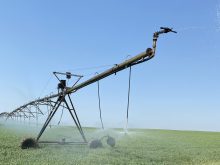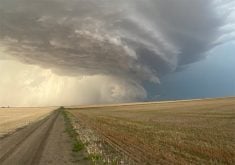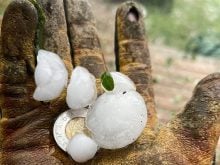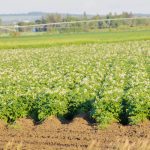in second cut stage
Some barley silage is coming off with good yields. Generally, crop conditions are behind normal. Corn and sugar beets need heat to mature. Most first cut hay is cut and off but not in great shape. Some second hay cut is coming off. Crops that didn’t get flooded are looking good. Dryland crops are looking very good. Little irrigation was done this year.
CENTRAL
GoCentral
Read Also
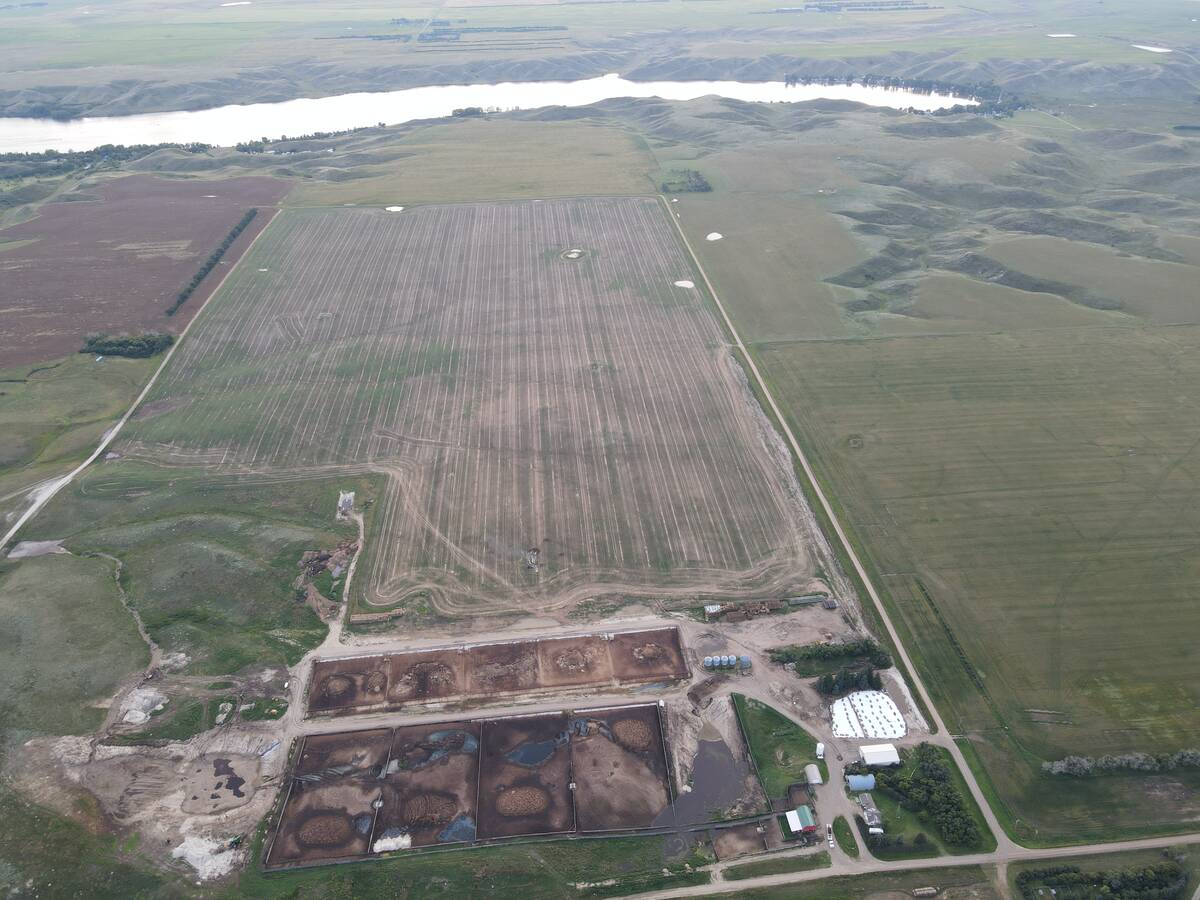
Saskatchewan RM declines feedlot application, cites bylaws
Already facing some community pushback, a proposed 2,000-head cattle feedlot south of Swift Current, Sask., has been rejected for a municipal permit, partly over zoning concerns about the minimum distance from a residence.
Crops are looking good, but some are starting to lodge with excess moisture. Generally crop conditions are good. Gophers are an issue. Grasshopper numbers are low. Some blackleg and fungal diseases are present because of excess moisture. First cut hay is complete with great yields and questionable quality.
NORTHWEST
PasturNorthwestring
Crop conditions are very good in some areas. Hay yields are reported as good to great. Some farmers are having trouble getting hay off in good condition with continual rain. Barley silage operations are underway. Grasshoppers are minimal and pastures are beginning to recover from overgrazing in past years.
NORTHEAST
ScleroNortheastage
The crops look good but some wheat and barley crops have leaf diseases. Some canola crops have larger than normal amounts of sclerotinia damage. Peas look good and some are starting to lodge. Peas are getting a second flush of Canada thistle and sow thistle. Most haying is complete but half is weathered.
PEACE &B.C.
DisPeace &B.C.
ost of the area has been declared an agricultural disaster. Most peas have been harvested. Yields range from five to 20 bushels per acre for peas. The early seeded fields have the highest yields. There has been no regrowth and the hay crop is 25 percent of normal yield. Cattle are being sold and leaving the area.
MANITOBA
SOUTHWESanitoba
deouthwestvest
Rain over the past week hampered harvest. Winter wheat yields are average and quality varies depending on fusarium levels. Fall rye is
being harvested with average yields and some reports of ergot. Spring cereal harvest has begun. Second cut of alfalfa has begun. Wet conditions continue to affect hay quality.
NORTHWEST
Haying orthwest
Most crops are reaching maturity and some harvesting is underway. Forage seed harvest is continuing. Higher incidence of diseases in cereals and canola is being reported, along with higher than normal weed pressure. Pasture conditions are considered good. Haying is mostly complete with yields 20 to 30 percent above normal. Native hay harvest continues to be downgraded by wet land and the lake levels adjacent to low lying areas.
CENTRAL
Wheat graentralell
Harvest was postponed by rain. Variable yields were reported in spring wheat, barley and canola. Spring wheat is grading well with low fusarium levels and yields range from 35 to 55 bushels per acre. Barley is yielding 60 to 80 bu. per acre. Oat harvest is starting and early yields range from 90 to 110 bu. per acre. Canola that was swathed two weeks ago is yielding 30 to 40 bu. per acre.
EASTERN
Flax ripeasternItermittent showers and thunderstorms slowed harvest. Winter wheat harvest is 90 percent complete with yields ranging from 40 to 70 bu. per acre. About 10 percent of the spring wheat is harvested and yields range from 15 to 50 bu. per acre. Lower than normal protein levels are reported. Oat harvest has begun and yields range from 85 to 100 bu. per acre. Flax ranges from 30 to 50 percent ripe.
INTERLAKE
FusariuInterlake grades
Rain hampered field operations. Swathing of canola has begun and combining of winter wheat is almost complete. Winter wheat yields range from 30 to 70 bu. per acre but grading is poor because of fusarium. Sunflowers and soybeans are in good condition. Haying has slowed because of humidity and showers.
SASKATCHEWAN
SOUTHaskatchewan
ngouthwestts
Winter wheat and fall rye harvest has begun, as well as some field peas and canola swathing. Farmers are desiccating peas and lentils. Excessive moisture is hampering harvest. Haying is wrapping up and farmers have started to scout fields for insects and disease.
SOUTHEAST
Foot rotoutheasts
Most areas received rain, but harvest is progressing on fall rye, winter wheat and peas. Swathing has begun on lentils, peas and canola. Foot rot is an issue because of the wet soil. Desiccating of peas and lentils has begun. Some insect control is underway.
WEST-CENTRAL
Humidest-Centraldrying
Rain and humidity has slowed harvest and haying. Fall rye and winter wheat harvest has begun. Some desiccation and swathing of peas and lentils are underway. Disease pressure in pulse crops is reported. Farmers are struggling to control weeds but generally the crops look good.
EAST-CENTRAL
Focusast-Centralntrol
High humidity and showers are problems for baling hay. Some winter wheat and fall rye has been combined. Farmers are undertaking weed control in unseeded acres but sprayers and tractors are getting stuck. Warm weather has pushed harvest along .
NORTHWEST
Disease orthwests
Harvest has begun and crops have started to turn. Haying is continuing, but it has been a struggle to get hay off. Diseases have been reported in pulses. Warmer temperatures have helped advance crops, but crops remain one to two weeks behind normal. Generally crops look good.
NORTHEAST
Fields rortheastt
Rain in most areas has halted haying. Hay swaths are slow to cure because of the high humidity. There are hay fields left to cut. Crop staging is variable and crops are generally one to two weeks behind normal development. Canola has finished flowering and cereal crops are heading out. Pulse crops are beginning to turn. Fieldwork continues to be a challenge with wet fields and continued rain. Some canola fields are being sprayed out or cultivated due to poor stands.





